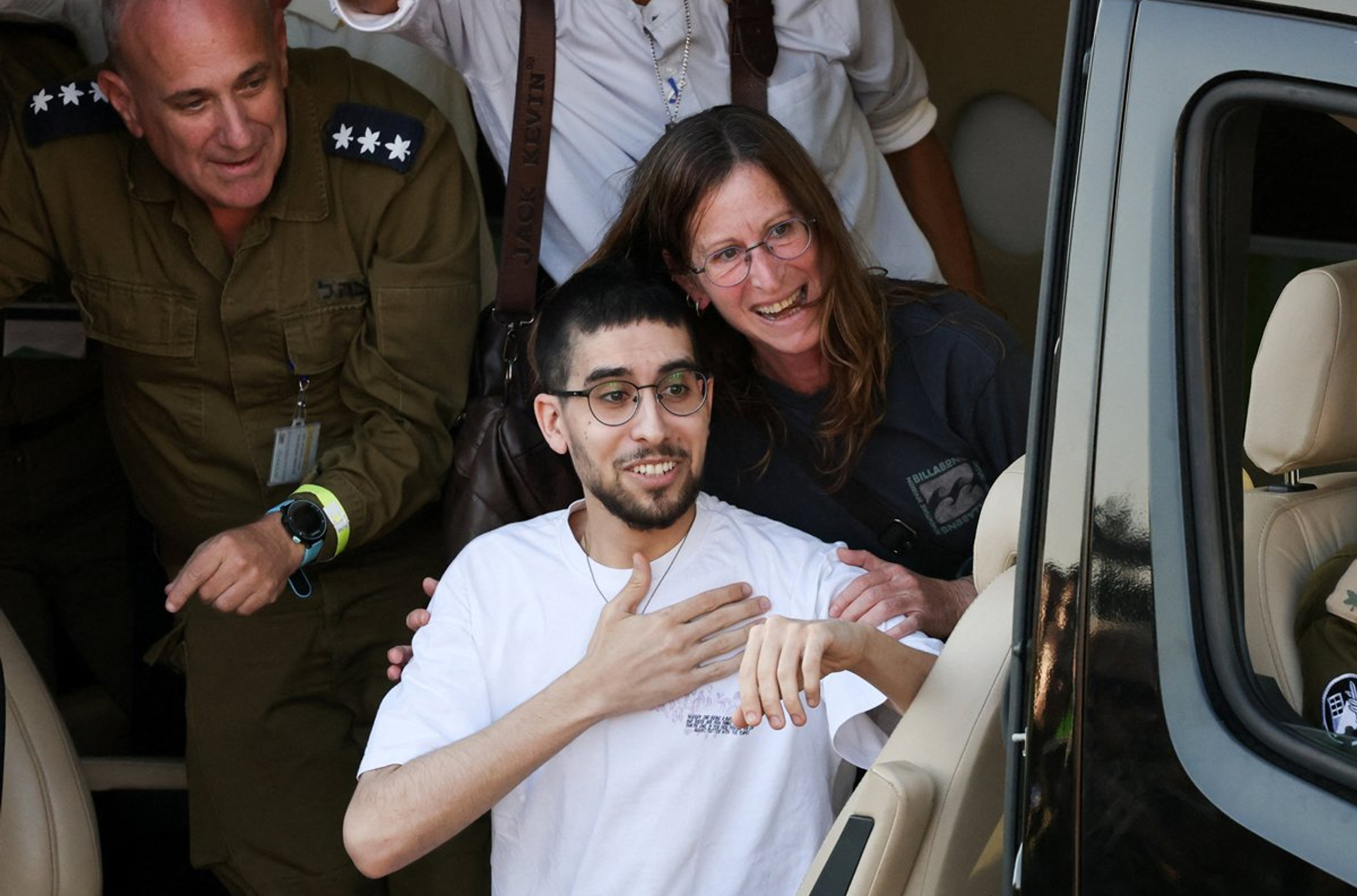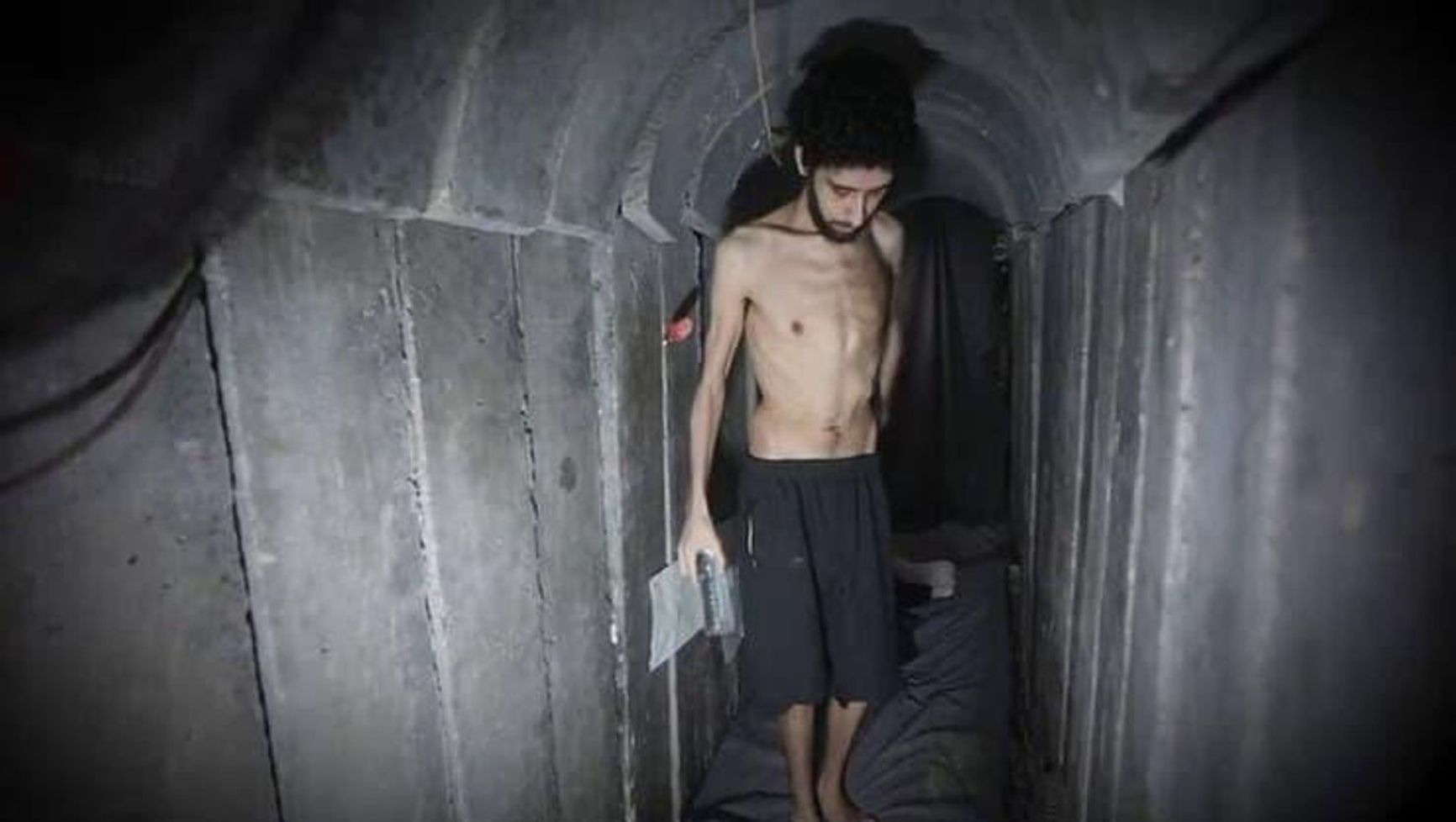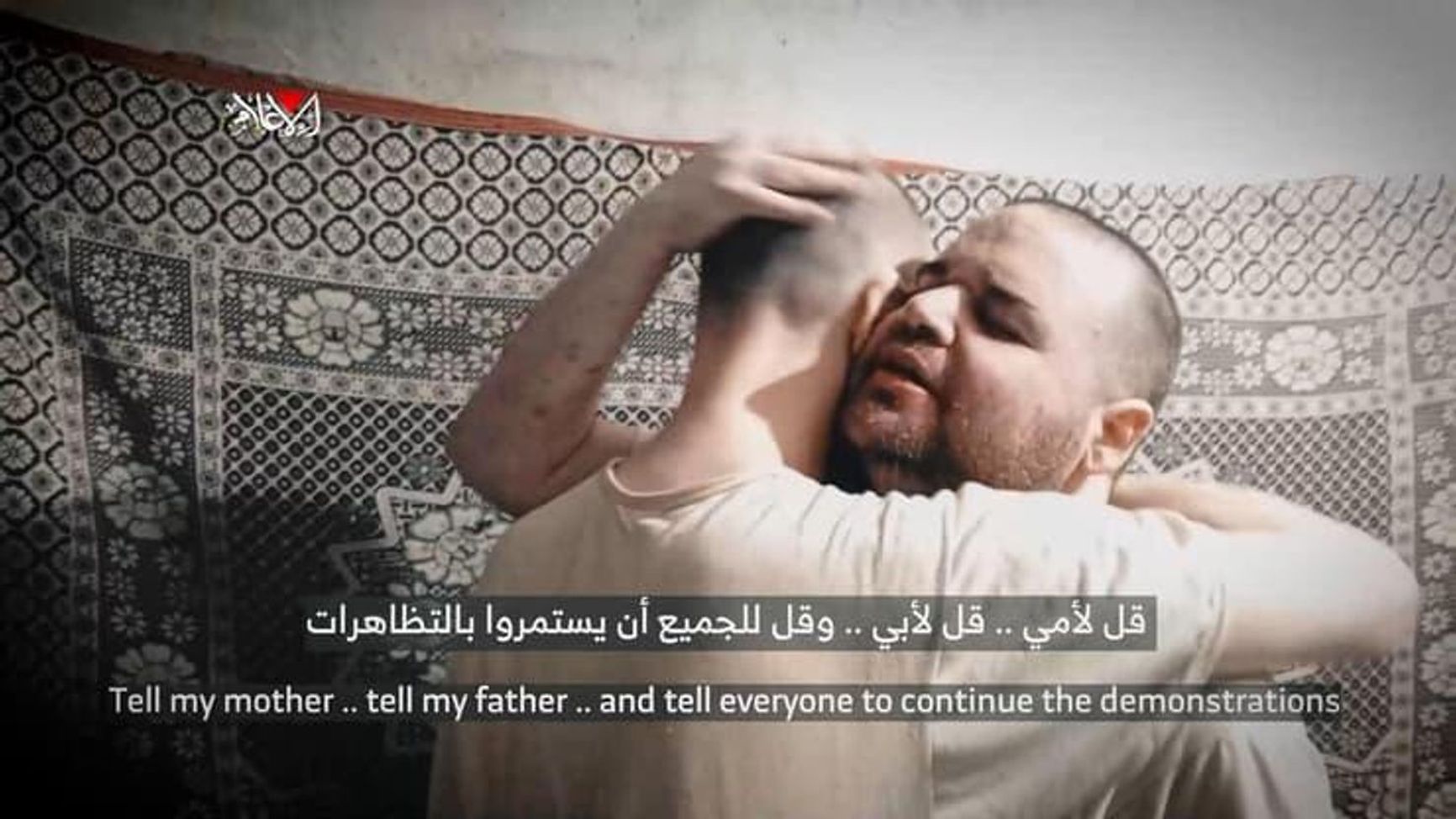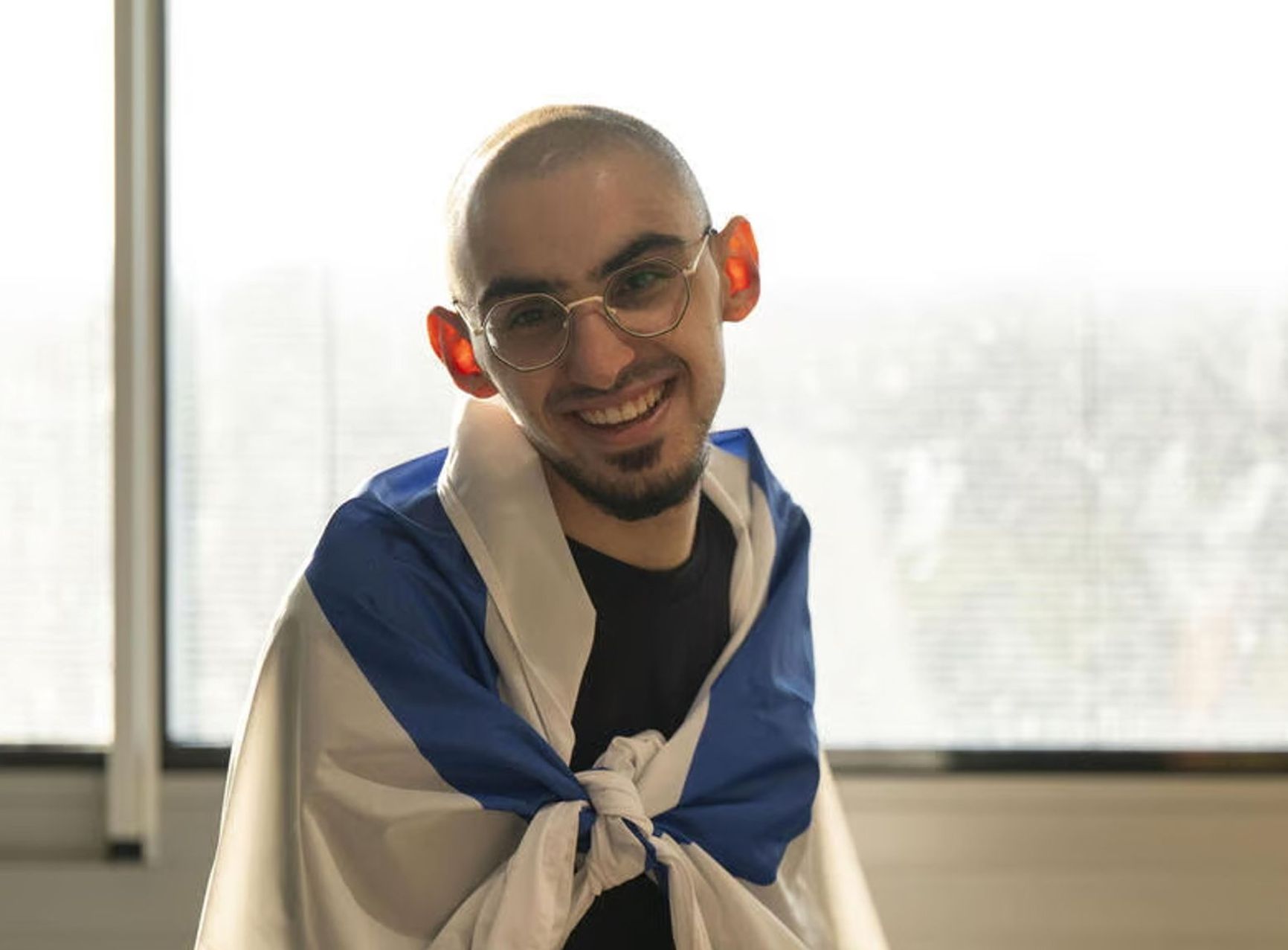

Twenty Israelis freed by Palestinian militants on October 13 are being discharged from hospitals after receiving initial medical treatment. Almost all of them spent most of these two years in Hamas’s underground tunnels. Ahead lie long months of therapy and rehabilitation. Their first testimonies about captivity are beginning to appear in the media — stories of torture, humiliation, and constant hunger. But not only that. The former hostages also described how they managed to deceive their captors, how they learned about events in the outside world amid their ordeal, and what helped them stay sane under inhuman conditions.
Content
“You are nothing, Jewish zeros”
Torture by hunger
Two years of isolation
“Between a card game and a bullet to the head”
Hamas scripted videos
Deceiving the captors
Watching TV with the terrorists
“I am Jewish, I am strong, I am not broken”
When the first rockets from the Gaza Strip hit the site of the Nova music festival in southern Israel at 6:30 a.m. on October 7, 2023, 22-year-old pianist Alon Oel and about twenty others hid in a roadside concrete shelter. Soon, Hamas gunmen found them and threw grenades into the structure. Many of those hiding were killed on the spot, while the wounded Alon and three other Israelis were loaded onto pickup trucks and taken to Gaza. In total, the militants took 251 people hostage that day. Around 1,200 others were simply killed.
“You are nothing, Jewish zeros”
Palestinian medics stitched up the pianist’s wounds without much care, leaving shrapnel in his body. Because of that, even now, after his release, Alon suffers from headaches and serious vision problems. He will soon undergo eye surgery.
Tank crewman Matan Angrest was captured after his tank was hit. In captivity, he was not only denied treatment — he was brutally tortured and beaten until he lost consciousness. For two weeks, Matan was kept tied by his hands and feet to a gas cylinder. He returned home with burns and a disfigured arm.
Another captured tank crewman, Nimrod Cohen, was treated demonstratively worse than most other hostages. According to his family, he was kept blindfolded in a cage. Still, when an ear infection developed, the militants gave him paracetamol.
Eitan Horn, who had no connection to the military, suffered in Gaza from an aggravation of a chronic illness. He had long been afflicted with an inflammation of the sweat glands — hidradenitis — and had been hospitalized for it before. In captivity, Eitan developed festering sores and ran a persistent high fever. He received no medical care.
Avinatan Or, abducted from the Nova festival, once tried to escape but was caught. After that, he was beaten and locked in a cage around six feet in height. Or, who is around six-foot-six, spent more than a year there, chained to the bars.
Avinatan Or, around six-feet-six, was beaten and chained to the bars of a six-foot-tall cage for more than a year
Yosef-Haim Ohana said that immediately after the deal to free the hostages was signed earlier this month, he and six other captives were placed in a deep, narrow pit. There, they could only stand pressed against the wall, and, as he put it, “you could die from lack of oxygen.”
Rom Braslavsky was also beaten and at first wasn’t even allowed to use the toilet. He had to relieve himself into bottles.
Hygiene was a major problem in captivity. According to Segev Kalfon, he and other hostages had to dig a latrine in the tunnel themselves — not only for their own use but also for their guards. “When we had toilet paper, I gave each person a small square,” he said after his release.
Those held in underground tunnels rarely had the chance to wash. Elkana Bukhbut, who spent almost all his time in chains, was allowed to shower only once — on his wedding anniversary. That day, he managed to persuade the guard to let him into the shower for a few minutes.
The captives were also forced to dig the tunnels themselves. “You are nothing, Jewish zeros,” the militants would say as they gave their orders.
“When you go down into a tunnel, you turn into a rat. The life you had above ground — it’s gone,” said Segev Kalfon.
“When you go down into a tunnel, you turn into a rat. The life you had above ground — it’s gone”
“Death becomes your best friend. You talk to death all the time. It’s impossible to describe. But in the end, you come to terms with the fact that your life is constantly in danger, that there’s no certainty in anything. And at the same time, you have no food, no contact with the outside world, and they do everything they can to make you suffer.”
Torture by hunger
A common form of torture was hunger, and the most striking evidence of this was provided by Hamas itself. A video of hostage Evyatar David that was released by the terrorist group in August 2025 showed an emaciated, bare-chested man digging his own grave right in the tunnel.
Evyatar was kidnapped from the Nova festival together with his best friend, Guy Gilboa-Dalal. Both were 22 at the time. According to their families, Guy endured the same abuse. The first thing Guy asked for after his release was chocolate cereal.
For three and a half months, the men were deliberately given almost no food. The terrorists openly said they wanted to turn them into a visible symbol of the hostages’ suffering — that they should be “reduced to skin and bones.”
Unexpectedly for Hamas, the video of Evyatar sparked an unwelcome reaction around the world, after which the hostages began receiving more food.

Evyatar David in a Hamas tunnel
Other captives also suffered from severe malnutrition. According to doctors, Avinatan Or lost 40 percent of his body weight over the two years of captivity. Eitan Horn shed 60 kilograms, and Maksim Kharkin about thirty. Relatives of former hostages said that after humanitarian aid deliveries to Gaza stopped, they were given almost no food.
Upon his release, 23-year-old Bar Kuperstein wanted Krave-style breakfast cereal with milk, which he had spent months dreaming about. He said the prisoners constantly talked about what they would eat once they were free. “The militants knew exactly how much food to give each hostage so they would suffer but stay alive,” said Bar’s mother, Julie Kuperstein.
Segev Kalfon recalled how seven captives tried to divide any food they received equally. To portion out soft cheese, they used a syringe.
Bottled water was worth its weight in gold. Usually, they filtered dirty drinking water through pieces of gauze, Segev said. According to Eitan Horn, he often had to drink unfiltered, salty-tasting water from underground sources.
Eitan Mor, from Jerusalem, worked as a security guard at the festival. The militants captured him while he was trying to evacuate wounded women. In captivity, he received just a few tablespoons of rice a day.
During his imprisonment, Mor was moved around forty times. For a while, he was held in the apartment of a Palestinian family, where he managed to steal a piece of pita. The head of the household then brutally beat him. “My son was saved by the terrorist’s wife, who shouted at her husband to stop,” Eitan’s father said in an interview.
Rom Braslavsky became so emaciated in captivity that he once managed to slip out of his handcuffs. By then, he had been moved from a tunnel to a house. When his guard stepped out, Rom found some pasta and tried to cook it. There was no gas, so he lit a fire using a book and the guard’s clothes.
Rom Braslavsky became so emaciated in captivity that he managed to slip out of his handcuffs
Neighbors saw the smoke and burst into the house. There were about forty of them, and they wanted to take revenge on the Israelis. Rom crawled under the bed and prayed. Fortunately, his guard returned before the Palestinians found him.
A few days before the release, the terrorists began force-feeding the captives so they would look healthier in photos and videos.
Evyatar David knew it was dangerous for his health and, despite extreme exhaustion, tried to eat only small portions. But some other hostages returned home with severe stomach pain and unstable blood sugar levels.
Two years of isolation
Eitan Horn from Kibbutz Nir Oz was kidnapped together with his brother Yair. Yair was released earlier as part of the February deal with Hamas. The militants made sure to film their separation and later released the footage.
It was a standard method of psychological abuse. Twin brothers Ziv and Gali Berman were abducted together from Kibbutz Kfar Aza, but were separated from the start and held in different places.

Footage released by Hamas showing the separation of brothers Eitan and Yair Horn
David Cunio and his younger brother Ariel were also separated immediately after being kidnapped from Kibbutz Nir Oz. Ariel’s girlfriend, Arbel Yehud, was abducted with them. Ariel was held in solitary confinement by Islamic Jihad terrorists and did not see a single Israeli during the two years. He learned nothing about Arbel’s fate until his release (she survived and returned to Israel in a January 2025 prisoner exchange with Hamas).
The same happened to Avinatan Or and his girlfriend, Noa Argamani. They were separated right away, and Avinatan spent the entire two years in a tunnel, completely cut off from the world. His captors rarely spoke to him, and his only form of entertainment was a Rubik’s Cube the terrorists gave him.
Rom Braslavsky was also kept apart from other Israelis — sometimes in a room with the bodies of slain hostages. There were many bodies, and not all have yet been returned. Rom shared this information with Israeli authorities. He is convinced the terrorists are deliberately claiming they don’t know the whereabouts of the others’ remains as part of an effort to delay their return.
“Between a card game and a bullet to the head”
Relations between the hostages and the Palestinians varied. Omri Miran from Kibbutz Nahal Oz was moved more than twenty times — from one hideout to another. In the early days after his abduction, he spent time underground, at one point handcuffed to a cage. Like many others, Omri also suffered from hunger: he was given only a modest portion of rice, and only every other day.
Later Omri was moved from the tunnels to a house belonging to one of the terrorists. There, he managed to win over the guards. Omri no longer needed food — he cooked for the Hamas members and even told them which spices to bring.
According to Omri’s father and brothers, at some point he was given a separate room and was allowed to move freely around the apartment. Once the hostage was even taken to the sea. He would spend most of the day playing cards with his captors.
It is important to note that Arabic is taught in Israeli schools, so almost everyone has at least a basic command of the language. That allowed many hostages to communicate with the terrorists.
Eitan Mor diligently improved his Arabic throughout his two years of captivity. He read books and newspapers and returned from Gaza fluent in the language. One day in captivity he was visited by Izz ad-Din al-Haddad, who took command of Hamas’s military wing after the elimination of Muhammad Sinwar.
He spoke to the hostage in a friendly manner and threatened the guards that if anything happened to Eitan he would kill them. This occurred after a brutal beating over the stolen pita.
Bar Kuperstein was much less lucky. The terrorists regularly vented their rage on him. When one of them lost a relative in the war, or when a house was destroyed by Israeli army actions, the guards brutally beat Bar. “Mom, you know, they were beating me, and I felt nothing; my body went numb,” he said after his release.
Segev Kalfon was held with Kuperstein. He says that every time the news showed Palestinian detainees in Israel, or when Israeli minister of national security Itamar Ben-Gvir commented on prison conditions, the guards mercilessly beat the hostages.
Yosef-Haim Ohana, also abducted at the festival, was even repeatedly threatened with being shot. The hostage was forced to appeal to his captors’ logic and dissuade them from killing him.
“Dozens of times I was a second away from a bullet to the head,” Yosef-Haim told his family after his release. “I would say, ‘Wait! What will you get from this? You’ll get nothing. But Israel will pay a reward for me. I am your living shield.’”
Hamas scripted videos
Omri Miran was also nearly shot once. It happened during the filming of a propaganda video in a tunnel.
Hamas fighters and militants from other groups periodically filmed hostages, forcing them to recite lines according to a set script — to criticize the Israeli government and demand an immediate halt to the war. For example, in a video released by Islamic Jihad at the end of June 2025, Rom Braslavsky delivers the line: “The next bombing will fall on my head.”
Hamas demanded that Miran call for protests inside Israel as part of an effort to pressure the government into a deal. The video was released in April, on the hostage’s 48th birthday.
According to Omri’s family, the terrorists were very dissatisfied with his “acting.” Neither the first nor the second take produced a convincing performance, and Omri refused to film again. The terrorist commander drew a gun and aimed at him. “Do whatever you want,” the Israeli replied. His brothers and father say that when they received the video from Hamas, they immediately realized that Omri did not want to follow the militants’ script. The hostage’s family forbade the release of the full propaganda video and published a shortened version.
Segev Kalfon simply refused to look into the camera or recite the prepared lines. “I acted like a bad actor because I was thinking about my parents, about my family. I didn’t want to say that a tunnel collapsed on me, that I was suffering and hungry, that my life was in danger — even though that danger was with me every day, every minute,” Segev recalled.

Maksim Kharkin meets his family after returning from captivity
The Russian-speaking hostage Maksim Kharkin, who shared a pit with Segev, appeared in two propaganda videos. In one, he was covered in bandages and appeared to be bleeding.
After returning home, he told his mother, Natalia Kharkina, that the bloody bandages had been applied specifically for the filming. But Maksim did not refuse to participate — so that his family could see he was alive.
Deceiving the captors
While Maksim was in captivity, his family avoided speaking to journalists. After his release, Natalia Kharkina explained that Maksim is a reserve officer, and the family wanted to hide this fact from the terrorists. Before he was captured at the Nova festival, Maksim had already gotten rid of his military ID and phone.
Rom Braslavsky and Bar Kuperstein managed to hide from the terrorists the fact that they were conscripted soldiers at the time of their abduction: Rom served in a unit in the Central Military District, and Bar was a fighter in the Nahal infantry brigade. Kuperstein told the militants who captured him that he worked as a paramedic.
Yosef-Haim Ohana concealed that he had held a command position in the Givati Brigade. Hiding the fact of military service entirely was pointless: the terrorists treated all male hostages of the appropriate age as soldiers. But Yosef-Haim managed to downplay his value to the terrorists, convincing them that he had served only briefly and had been discharged from the army.
Watching TV with the terrorists
One day, the guards gave Yosef-Haim Ohana and his fellow captives a tiny radio. The seven hostages in the pit were supposed to listen to the call to prayer from the muezzins. But the hostages showed technical ingenuity, his father Avi Ohana said: “They saw electrical cables running all the way to the top of the tunnels, connected them to the radio, and caught Galei Tzahal.”
Yosef-Haim even heard an interview with his father on the radio. Occasionally, some hostages were allowed to watch television.
Matan Angrest was able to watch TV for a few minutes daily during the first year and a half of captivity, which allowed him to learn Arabic. From the news, Matan found out about Israel’s war with Lebanon, the assassination of Hassan Nasrallah, and the fate of his fellow soldiers. However, in the last six months of captivity, he was completely cut off from outside sources of information.
At one point, Bar Kuperstein could watch television for 20 minutes a day. On his birthday, he saw the celebration his family held at the “hostages’ square” in Tel Aviv. After his release, Bar said he had been deeply moved and that what he saw gave him strength.
Omri Miran also saw his relatives on television. He used the goodwill of the guards to regularly watch Al Jazeera with them, entertaining the terrorists by mocking, for example, Houthi speeches.
Rom Braslavsky received news in controlled doses, with half-truths inserted to increase the psychological pressure. The terrorists showed him footage of portraits of hostages from Tel Aviv, convincing him that his photo was missing — that he had been forgotten and that no one was fighting for his release.
During the Israel-Iran war this past June, Rom was told that Israel had been bombed, the country destroyed, and nearly 3,000 soldiers killed. In reality, 30 people died in the 12-day conflict. Only one of the casualties was an IDF soldier, and he was killed at home while on leave.
“I am Jewish, I am strong, I am not broken”
Many hostages became much more serious about observing religious practices. Eitan Horn, for example, admitted that in 2025 he observed a full dry fast on Yom Kippur for the first time in his life. Food was already nearly nonexistent, and he managed to abstain from water as well.
Every Saturday, Evyatar David recited the Kiddush — the blessing marking the beginning of Shabbat. Matan Tsangauker found a book of David’s Psalms (Tehillim) during captivity, likely belonging to one of the soldiers active in the area. He kept the book for several months and prayed from it.
Matan Angrest managed to obtain a Jewish prayer book, a Siddur, from a Hamas commander and prayed from it three times a day.
Rom Braslavsky, on the other hand, was pressured to convert to Islam. He was extremely hungry, and the terrorists promised him food if he agreed to read the Quran and fast during Ramadan. But for Rom, preserving his identity was crucial. According to his mother, he regularly told himself: “I am Jewish, I am strong, I am not broken.”

Rom Braslavsky
Faith was not the only thing that helped the hostages endure harsh conditions. Matan Angrest sang songs by popular Israeli performers, while pianist Alon Oel constantly replayed music in his head.
Bar Kuperstein tried to organize his life in the tunnel. He dug a latrine, ran in a light, and built a bench. He also made an effort to sleep for as long as possible, no matter what was happening around him. Later, he told his mother that this routine was what kept him sane.
Omri Miran counted each day in captivity. He didn’t write down the dates but calculated them in his head, always knowing exactly which day it was.
Until the very end of his captivity, Segev Kalfon dreamed of making a defiant gesture in the event that the terrorists staged a “ceremony” to celebrate his release. “I dreamed of going on that stage, with Hamas members standing around me, and shouting ‘Shema Yisrael,’” Segev explained after being freed. “They told me, ‘You’re crazy; if you do that, they’ll send you back.’ But I said I didn’t care — I wanted the cameras to see me do it.”
Fortunately, he never got the chance to find out. The terms of the exchange deal forbade the terrorists from staging humiliating ceremonies when handing over Israeli hostages to the Red Cross.